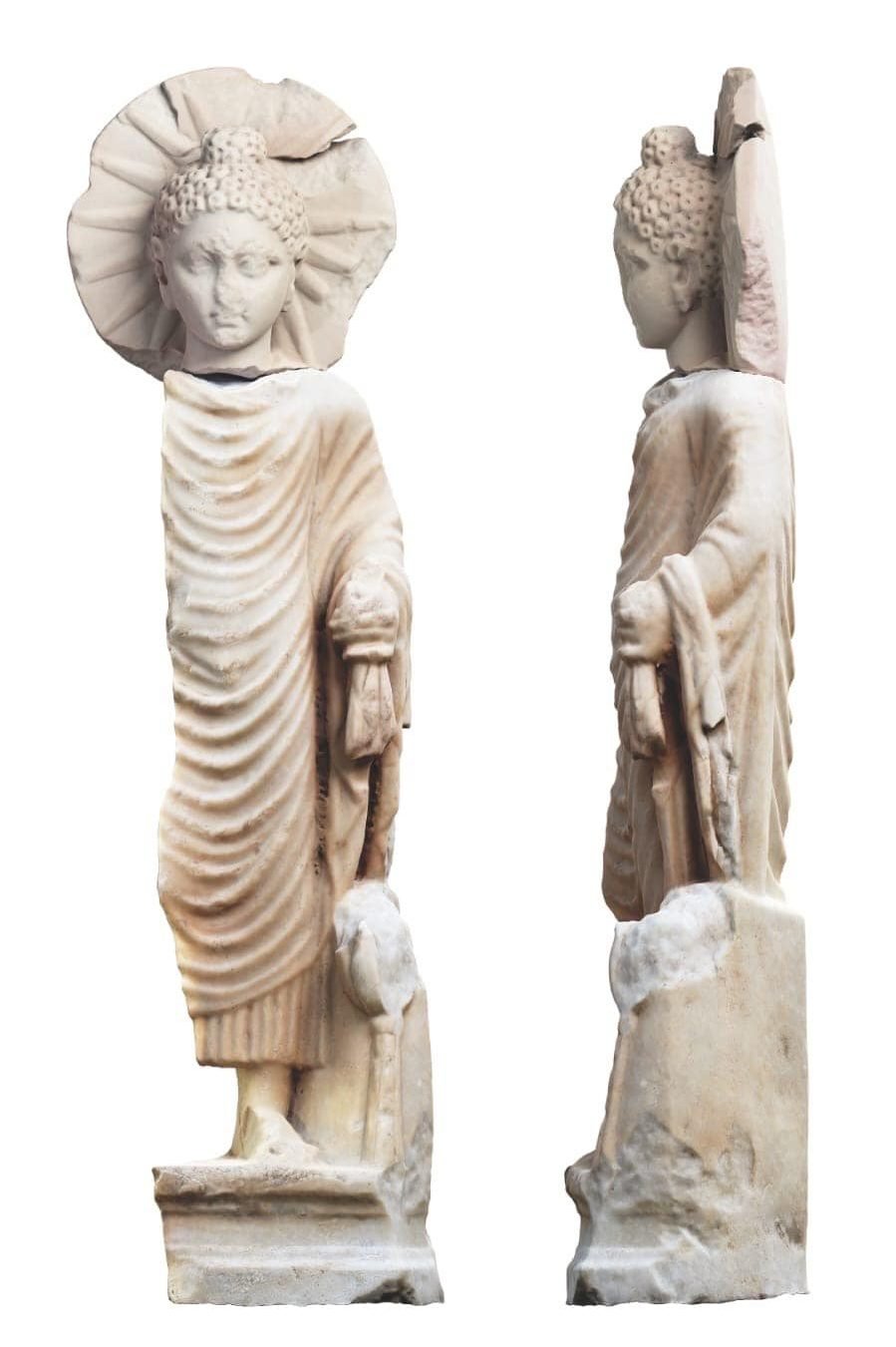
Archaeologists have made the shocking discovery of a marble Buddha statue in a temple in the ancient Egyptian port city of Berenike, shedding new light on the trade links between India and ancient Rome.
Prior to the finding, no depiction of the Buddha had ever previously been found further west than Afghanistan, according to The New York Review of Books. Egypt was an important stop on the trade route connecting the Roman Empire to the rest of the ancient world. Berenike, which sits on the western shore of the Red Sea in modern-day Egypt, was a particularly busy hub until it was abandoned in the 6th century C.E.
The two-foot-tall artifact, showing Buddha’s torso and head with a radiating halo of sun rays, was found by a Polish-American research team in a temple to the Egyptian goddess Isis.
Since the discovery in March 2022, experts have speculated the Buddha was made in Alexandria in the 2nd century C.E., since it was carved out of Mediterranean marble in a hybrid style that mixes Indian-Gandharan influences with the local Classical tradition.
Polish researcher Mariusz Gwiazda of the University of Warsaw believes the piece was commissioned by a wealthy Indian sea merchant, who at some point donated it to the temple, according to a press release recently published by Egypt’s Ministry of Tourism and Antiquities. Steve Sidebotham, from the University of Delaware, has further suggested that it would have been a thank-you gift for the trader’s safe reception by the Roman Empire.
Other items have been found in the same temple that further our understanding of the prominence these trade routes and the resulting cross-cultural exchange, including two coins from the Indian kingdom of Satavahana, a bilingual inscription in Greek and Sanskrit and sacred Hindu objects, including a trinity of early deities.
More Trending Stories: